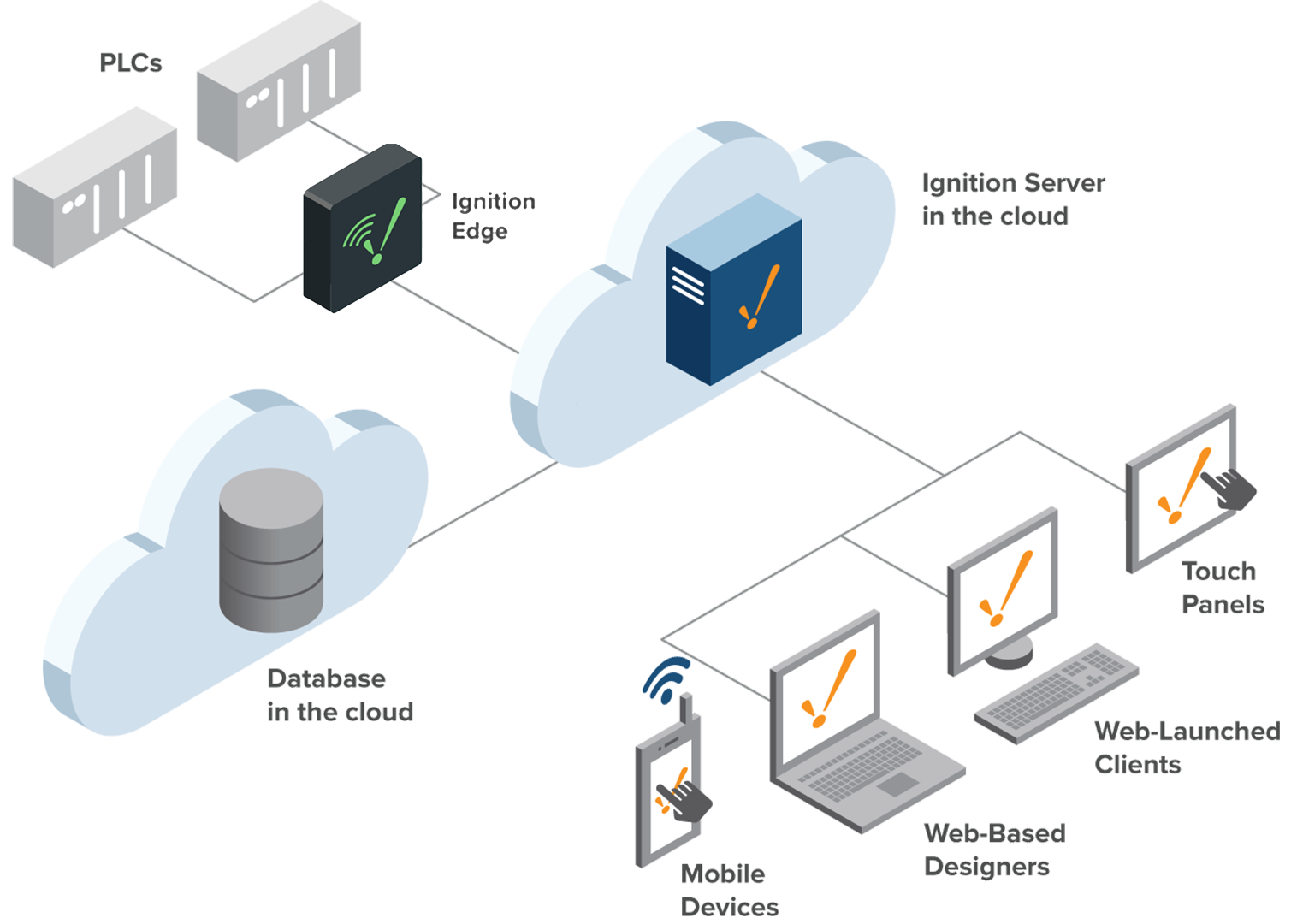Cloud Based Architecture
Hosted Ignition Server
Ignition servers can be hosted in the Cloud. Inductive Automation does not provide cloud services, but there are many great providers out there, such as Amazon EC2, or Windows Azure. The server can connect to the PLCs at the remote or customer sites via Round Robin Poll, Cell Tower, Satellite, or Secure VPN. The clients are connected to the Ignition server via Internet. Liberal use of Ignition's security features protects each customer from accessing another customer's projects or data.
Architecture Example
In this example, we see the Standard Architecture, but with the Ignition Server and Database both running on cloud servers. Note, that the Database and Ignition are on different cloud servers. This is because cloud service providers generally have specialized services that are designed explicitly for hosting SQL databases, as well as more general purpose services such as running Ignition. An installation of Ignition Edge is placed local to the PLCs, and is responsible for forwarding data to the cloud.

Why Use a Cloud Based Architecture?
This type of architecture is ideal in smaller organizations since you don't have to worry about maintaining a server. Additionally, there is no on-site IT staff required to monitor the system.
Does the Database Always Have to be in the Cloud?
If Ignition is hosted in the cloud, then it is very common to have your database also hosted in the cloud. However, many of our customers find that also having a controls database on-site to store temporary or in-progress data useful. This is great when you want to have data stored locally.
Are Cloud Based Servers Secure?
Cloud based servers are increasingly common, but it is important to educate your organization on the risks associated with them. If your organization is interested in a cloud based solution, we recommend following the guidelines in the Ignition Security Hardening Guide, as it addresses many potential security issues for both cloud and non-cloud based servers. Additionally, if offers recommendations on how to better protect your system.
Should I have a Redundant Ignition Server in the Cloud?
If you are using redundancy or are concerned about uptime, you should be using Ignition redundancy regardless of whether your Ignition is in the cloud. While most cloud providers offer built-in redundancy, this is often much slower than Ignition's redundancy failover time. Typically Cloud Server redundancy has a new computer instance spun up (started) in the event the original fails. This will often take a couple minutes where Ignition's redundancy (with default settings) takes around 20 seconds to switch over. There are other options to make a Cloud Server start faster, but currently they all slow down the CPU substantially to make it possible.
What if I Require an On-Site Server with Redundancy?
If you are using Ignition's Redundancy with a Cloud Server, then typically we recommend that both of the servers are run side-by-side. This means either both in the cloud or both on site. One warning: If you have both instances of Ignition in the cloud but if your connection to the internet goes down, then you lose access to both instances of Ignition.
Cloud Service Suggestions
Many customers find the following cloud based service suggestions helpful. This is not an exhaustive list, there are many good options available.
Amazon Web Services
- Ignition Hosting: AWS EC2 Instance types. The M3 and M4 instance types meet most customers needs in regards to hosting Ignition.
- Database Hosting: AWS Relational Database Service.
Microsoft Azure
- Ignition Hosting: Azure for Discrete Manufacturing
- Database Hosting: Azure SQL Database
